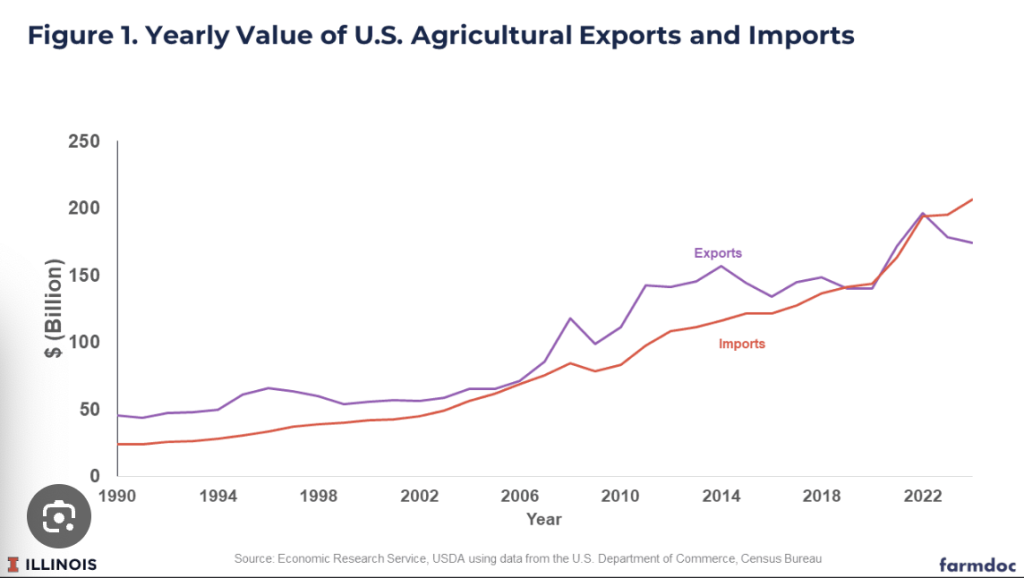
President Donald Trump’s tariff policies, aimed primarily at addressing trade deficits and revitalizing U.S. manufacturing has significantly impacted American agriculture and farmers.
Although these tariffs were intended to bolster domestic industries by restricting foreign competition, they caused substantial disruptions within the agricultural sector, which heavily relies on global markets for profitability and sustainability.
One immediate consequence of Trump’s tariffs has been retaliatory measures from major trade partners such as China. Prior to these trade tensions, China was one of the largest importers of American agricultural products, including soybeans, sorghum, and pork. However, in response
to U.S. tariffs, China imposed its own retaliatory tariffs, dramatically decreasing the demand for American agricultural exports. For instance, soybean farmers saw exports plummet, forcing many to store excess crops or sell at reduced prices domestically. This not only lowered income but also resulted in a surplus that depressed market prices, putting financial pressure on Farmers.
Beyond soybeans, the broader agricultural industry experienced financial strain due to reduced global market access. Commodity prices for other exports such as pork, dairy, and grains also suffered. Farm income saw a significant decline, prompting increased financial instability within rural communities. According to industry reports, farm bankruptcies and loan delinquencies have risen noticeably since the tariffs were imposed, indicating the severe economic stress faced by many farmers.
Moreover, tariffs led to unintended consequences in the domestic market. For example, tariffs on imported agricultural products intended to protect American farmers often resulted in higher prices for consumers. Tariffs on imported steel and aluminum additionally increased input costs for farmers, making equipment, machinery, and storage solutions more expensive. In response to these negative impacts, the Trump administration implemented substantial government aid packages totaling billions of dollars to alleviate farmers’ economic hardships. While these payments provided temporary relief, critics argue that this approach is unsustainable in the long term and creates dependency rather than addressing underlying market access issues.
Looking ahead, the long-term viability of American agriculture amidst these trade disruptions remains uncertain. While tariffs were initially intended to protect domestic industries, the complex repercussions demonstrate how deeply interconnected global trade and agriculture have become. Ultimately, the success of tariffs in supporting U.S. farmers hinges on establishing a stable, predictable trading environment that restores global market access and ensures fair competition.
Sources
https://www.washingtonpost.com/business/2025/05/01/tariffs-tomatoes-mexico-price

